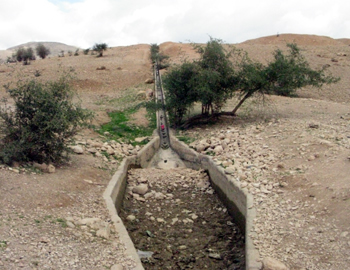Category: Reports
-
Gazan rap group pay tribute to Vittorio Arrigoni
14 May 2011 | International Solidarity Movement The Gazan rap group DARG Team have recorded a song in memory of the International Solidarity Movement activist Vittorio Arrigoni who was kidnapped and murdered in Gaza last month. The song entitled ‘Onadekom (Calling You)’, samples a popular resistance song, taken from a revolutionary poem written by the…
-
Teen critically injured as Israel cracks down on Nakba demos
13 May 2011 | Popular Struggle Coordination Committee Updated 14 May 2011: Milad Ayyash died of his injuries reported below. 17 year-old was critically injured from live fire in East Jerusalem. An American protester suffered serious head injury after being hit by a tear-gas projectile shot directly at him from close range. Israeli military and…
-
Villagers of Jaloud protest their electricity being cut
13 May 2011 | International Solidarity Movement Today the village of Jaloud held a non-violent demonstration against the decision of Israel to cut off the electricity of seven families living on the outskirts of the village. The villagers and several international organizations marched from the village to the aforementioned houses carrying banners protesting the theft…
-
B’Tselem: Report on Israeli expropriation of Palestine’s natural resources
11 May 2011 | B’Tselem Dispossession and Exploitation: Israel’s Policy in the Jordan Valley & Northern Dead Sea Click here for an interactive version. Download the full report here (pdf). The Jordan Valley and the northern Dead Sea area contains the largest land reserves in the West Bank. The area covers 1.6 million dunams, which…
-
Israeli army fires on Gaza demonstration at Erez Crossing
10 May 2011 | International Solidarity Movement, Gaza The Israeli army fired on 50 Palestinian and international activists protesting the Israeli-enforced closure of the “buffer zone” at Erez Crossing in Beit Hanoun, Gaza Strip today. The demonstration, organized by the Beit Hanoun Local Initiative, was joined by activists from the International Solidarity Movement – Gaza…

